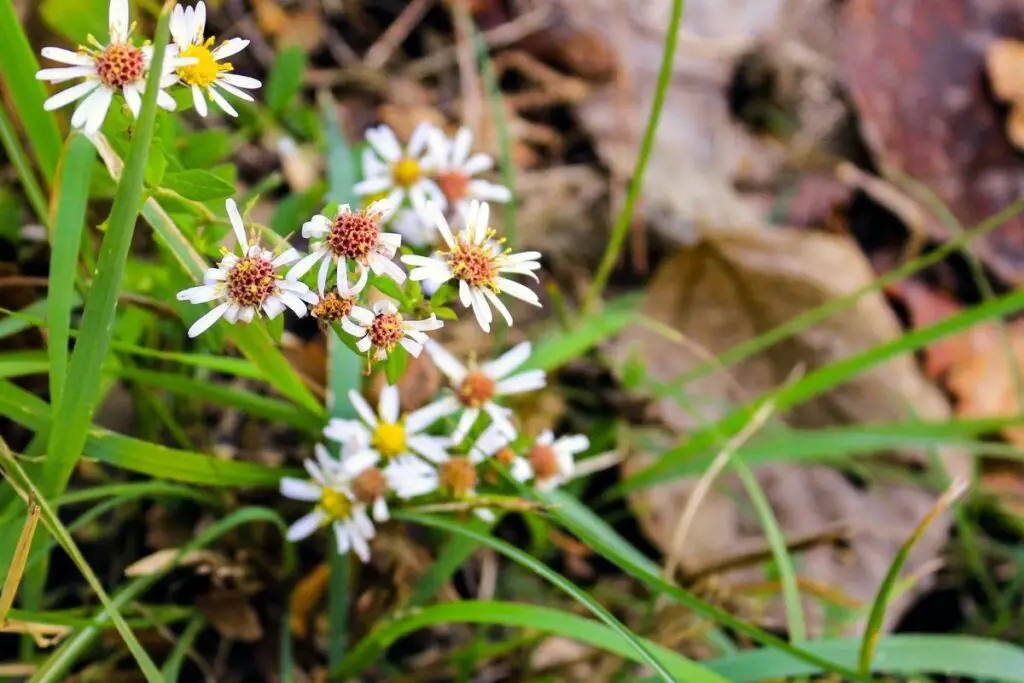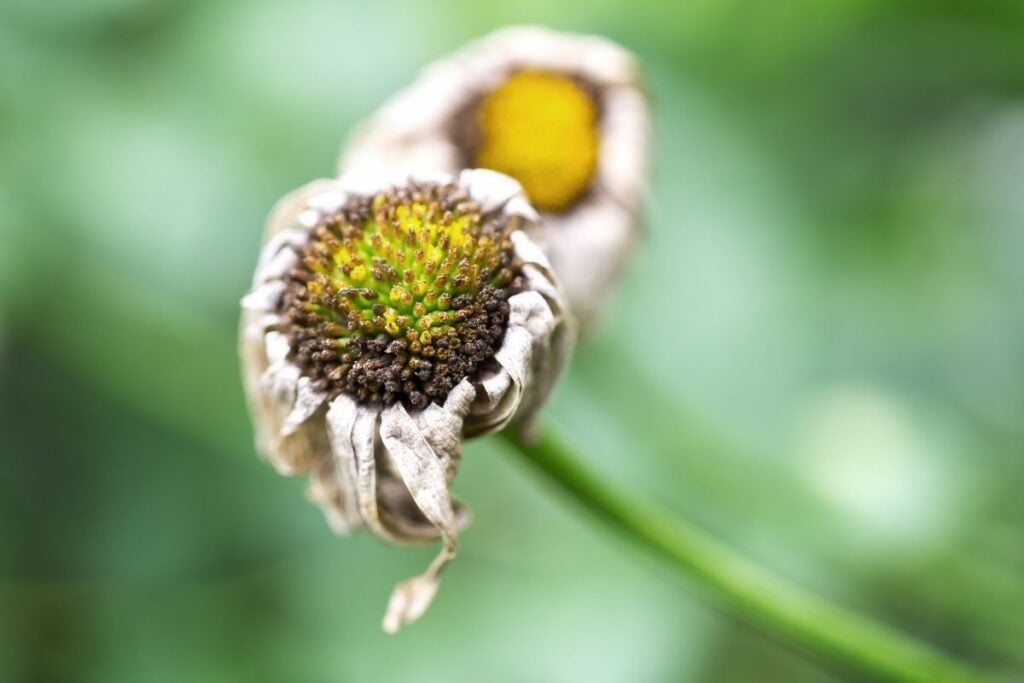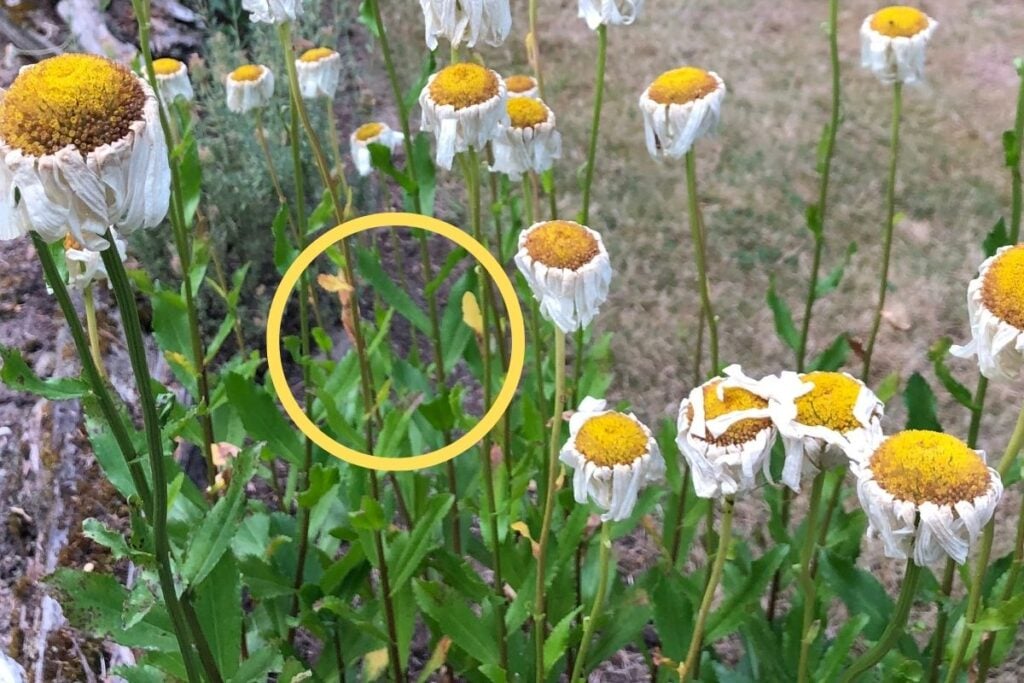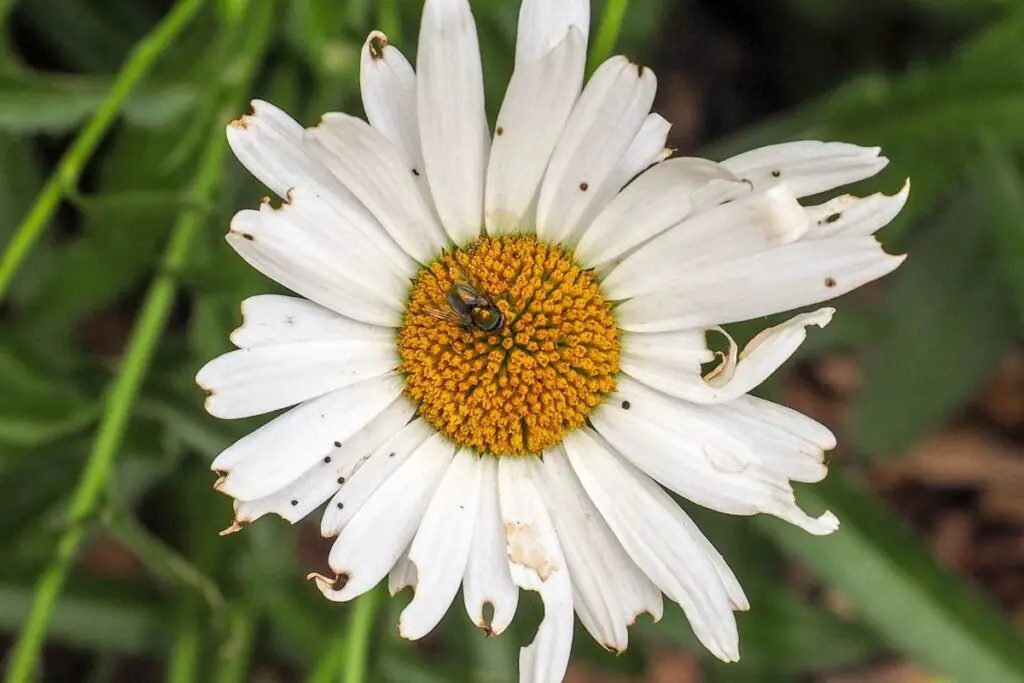Daisies are tough and sturdy plants, and they can survive in almost all weather conditions and don’t need too much care. Having said that, don’t completely ignore your daisies as they need to meet the basic requirements to survive, thrive, and add beautiful blooms to your garden.
But what sign does the daisy plant give before dying? Let us understand if your daisies are under stress and find out the reason behind it!
Signs of dying daisies are:
- Stunted growth of the plant
- Wilting of foliage
- White spots on the leaves
- The leaves starts turning brown
- Some leaves starts turning yellow
- Droopy leaves
- Shriveling of the leaves
There can be various reasons why your daisies are not looking healthy. You will need to study the signs that your plant is showing, and if you can identify the problem, you will be able to recover your dying daisy plants.
Every sign that your plant is showing can have different reasons behind it, and there can be multiple issues. Therefore, it requires a detailed observation to identify the exact problem.
We will now discuss the various reasons and signs your daisies can show before they die. It is vital to identify these signs early, which will help you save your daisies before they die.

7 signs my daisies are dying
While on the verge of dying, your daisies will show different signs. Being the owner of the plant, it is up to you to identify these signs.
The sooner you notice the signs, the lesser is the chance that your plant will die. Below are the common signs that suggest that your daisies are going to die.
Stunted growth in your daisies
Your daisies can show stunted growth due to various reasons. However, this is an indication that your plant is becoming weak. Below are the reasons for the stunted growth of your plant.
Low light: Your daisies can show stunted growth due to a lack of sunlight. Daisies are sun-loving plants that like to stay under the direct sun throughout the day, but if the light is obstructed due to some reason, it might not thrive normally, and it will also retain moisture.
To revive them from this condition, they need exposure to direct sunlight. You can fix this problem by transplanting it. If this is not possible, you can try removing the obstruction due to which the sunlight is blocked.
Overfertilization: Overfertilization can also cause stunted growth in your daisies. It will never support the growth of your daisies and will instead take nutrition from them as the soil can become too acidic for your daisy’s liking.
You can fix this issue by washing away the fertilizer if the soil is well-draining. Otherwise, you can trim down the affected areas of the plant and replant it at a different spot where the pH value of the soil is favorable for your daisies.
Also read: How Much Light Do Daisies Need? (Daisy Light Requirements)
Looking for gardening supplies? We have tested 100's of products before recommending them to you guys. Check out our best pick below:
| Image | Gardening Supplies | Best Price? |
|---|---|---|
 Top
Top Top
Top | Raised Garden Bed Kit | Check On Amazon |
 | XLUX Soil Moisture Meter, Plant Water Monitor, Soil Hygrometer Sensor for Gardening, Farming, Indoor and Outdoor Plants, No Batteries Required | No Results |
 Top
Top Top
Top | 82 Pcs Garden Tools Set and Extra Succulent Tools Set | Check On Amazon |
 | Joeys Garden Expandable Garden Hose with 8 Function Hose Nozzle, Lightweight Anti-Kink Flexible Garden Hoses, Extra Strength Fabric with Double Latex Core, (50 FT, Black) | No Results |
 Top
Top Top
Top | Dual Chamber Compost Tumbler | Check On Amazon |
 Top
Top Top
Top | Sunnyglade Plant Stakes | Check On Amazon |
 Top
Top Top
Top | Organic Cold Pressed Neem Seed Oil | Check On Amazon |
 Top
Top Top
Top | Mighty Mint Gallon :-Insect and Pest Control Peppermint Oil | Check On Amazon |
 Top
Top Top
Top | Scotts DiseaseEx Lawn Fungicide | Check On Amazon |
 Top
Top Top
Top | Jacks Classic 20-20-20 All Purpose Fertilizer | Check On Amazon |
 Top
Top Top
Top | 30,000 Seeds Pollinator Attracting Wildflower Mixture | Check On Amazon |
 Top
Top Top
Top | Survival Vegetable Seeds Garden Kit-Over 16,000 Seeds | Check On Amazon |
Wilting of leaves and foliage

Below are some common reasons due to which the leaves of your daisies can start dying:
Environmental changes: This can happen whenever there is a sudden change in the plant’s environment.
This sudden shift in temperature, sunlight, humidity level, etc., can cause wilting of the leaves of your daisies.
Your plants will try to indicate this sudden change with their dying leaves even though the daisies are sturdy enough to resist any such change and adapt well to the environment to regain their average growth.
Pests: Pests and bugs can also be a reason for the dying leaves.
Whiteflies, spider mites, thrips are some commonly known pests that can take away the nutrients from the plant, and they can lead to the death of leaves in your plant.
You can control this situation by using organic pesticides, horticultural oils, and non-detergent soap. You can use them with the help of a spray bottle, and this will help your plant to regain its health.
Low light: If, due to any reason, your plant is not receiving adequate sunlight, it will not be able to perform photosynthesis which will result in wilting of the leaves.
In this case, you will have to make sure that your daisies receive enough sunlight throughout the day.
Also read: How To Get Rid Of Bugs On Daisies? (Common Bugs+Solution)
White spots on the leaves and stem of the daisy plant
White spots on the daisy plants are caused by the fungus called powdery mildew.
Fungal disease: The most common reason for the white spots on leaves, stems, and flowers of the daisies is a fungal disease.
Because of the fungal disease, white spots are caused on the plant, and it is very harmful and can make your plant sick and eventually kill your plant in a few days.
Your plant will need quick treatment in this situation. You might face this situation in weather conditions where the plant is not receiving enough sunlight, and there is more than 80% humidity in the atmosphere. Due to these conditions, the roots will remain moist for a very long time, and the fungal disease will likely happen.
This fungal disease spreads quickly, and therefore, you need to resolve this issue as soon as you can. By using a homemade solution, you can get rid of the fungus.
You can mix a non-detergent soap with some neem oil, and by combining them with the water, you can prepare a spray. Wash the leaves with this solution regularly and see if the issue is resolved within two weeks. If not, you will need to use fungicides from the market for the indications of use.
Leaves turning brown
Let us discuss the causes of the leaves of your daisies turning brown:
Excessive sunlight: No doubt the daisies are sun-loving plants, but if they stay under the scorching sun for a long time with very high temperatures, it will not do any good to them.
Excessive heat can cause sunburn, and due to this reason, the leaves can turn brown. In such cases, you need to provide some shade to your daisies and ensure that the soil is not completely dried out. Water them to help them retain moisture.
Overwatering: Daisies don’t need a lot of water to thrive. It is ideal for them to be watered once a week in favorable conditions.
Overwatering can cause root rot in your daisies and increase water content in the cell sap, due to which the leaves can turn brown.
To avoid this situation, you will need to make sure that the soil in which your daisies are planted is a good draining soil, and if it is not, you will have to replant your daisies in a spot where the soil is sandy enough to drain all the extra moisture.
Also read: How Much Water Do Daisies Need? (Daisy Water Requirements)
Leaves turning yellow

Yellow leaves can also be an initial sign that your daisies are dying.
Watering problems: Overwatering, as well as underwatering, can cause the yellowing of leaves in your daisy plant.
Overwatering can stop the plant from absorbing vital nutrients, and thus, the leaves of the plant turn yellow.
Similarly, underwatering of the daisies restrict the roots from carrying water to every part of the plant so that the leaves can turn yellow.
Daisies will need water only when the upper layer of the soil becomes flaky. So before watering the daisies, kindly check if the soil is dry or moist.
Overfertilization: Fertilizing your daisies frequently can be rather harmful to them. Daisies thrive on sunlight and water with essential nutrients in the soil, and therefore fertilization is only required when the plant has used up all the soil nutrients.
If it is required, use an all-purpose fertilizer to nourish your plant. It may also need fertilizer before the blooming season but don’t overdo it.
If by any chance, you have over-fertilized your daisies, then you will need to add some sand in the soil and water it so that the extra fertilizer will get washed away.
The leaves of the daisy plant are drooping
Multiple reasons can cause droopy leaves. Let us discuss all the reasons below.
Underwatering: The most common reason for drooping leaves in the daisies can be a lack of moisture. This can happen due to insufficient watering.
If you have not watered your daisies for a long time, then the plant will not draw the nutrition from the roots, and the leaves will droop. The main reason behind drooping is dehydration due to the lack of photosynthesis and transpiration.
If you identify that your plant is not being fed with water for a long time and is suffering from a lack of moisture and the leaves are drooping, then water your plant immediately.
As soon as you water your daisies, you will find that they are recovering, and within one or two days, they shall fully recover from this issue.
To maintain the moisture in the soil, you can also use the drip irrigation method and not overwater your plant suddenly.
Overwatering: If you think that watering your daisies daily will help them grow faster, then you are wrong. It would be best if you watered your daisies as per their moisture requirements and current conditions.
As many people don’t know that watering the plant every day can cause problems, they overwater the plant. But, unfortunately, it causes root rot, and the leaves droop, and gradually the plant starts dying.
Overwatering can stop the plant’s water supply, and it will not allow the roots to breathe, due to which the roots will start rotting.
If you can identify that your plant is suffering because of overwatering, you should not water your plant until you see the upper layer of soil drying out. After that, you will see that your daisies are reviving.
Too much light: If the daisies are under the scorching sun, it will take away all the moisture from the leaves.
Scorching sun in hot weather can fasten the process of transpiration, and as the leaves lose a lot of water in this process, they can turn droopy.
If you understand the problem, you can take care of this situation and provide your daisies a temporary shed to save them from intense sunlight.
The leaves of daisies start shriveling

The leaves of daisies can start wilting due to the following reasons:
Pests: Usually, daisies are not infested by pests, but in hot and humid conditions where they are not exposed to sunlight frequently, they might get infected. Pests like thrips, whiteflies, and bugs can cause harm to the plant if not controlled in time. One of the signs is wilting of the leaves.
To control this situation, you will need to spray the prescribed pesticides. You can also spray solutions like neem oil and organic pesticides until the bugs are removed from your daisies.
Too much watering: Excessive watering can also cause wilting of leaves in your daisies. Too much water stops the roots from breathing, and therefore the supply of adequate air and water is hindered.
The plant is deprived of nutrients due to this issue, and the leaves start withering. To fix this, you will need to let your plant dry under the sun and not water it for a few days. By doing so, you will see that the plant is recovering, and the leaves are coming back to their original shape.
Final Words
All the signs that we have discussed can be the reasons for your dying daisies, but that will happen if you neglect the plants. On the other hand, if you provide all the essential elements to your daisy plants and give them some care, they will recover and bloom in your garden.
Ref: Wikipedia, Britannica, University Of Florida, Ucanr.edu
